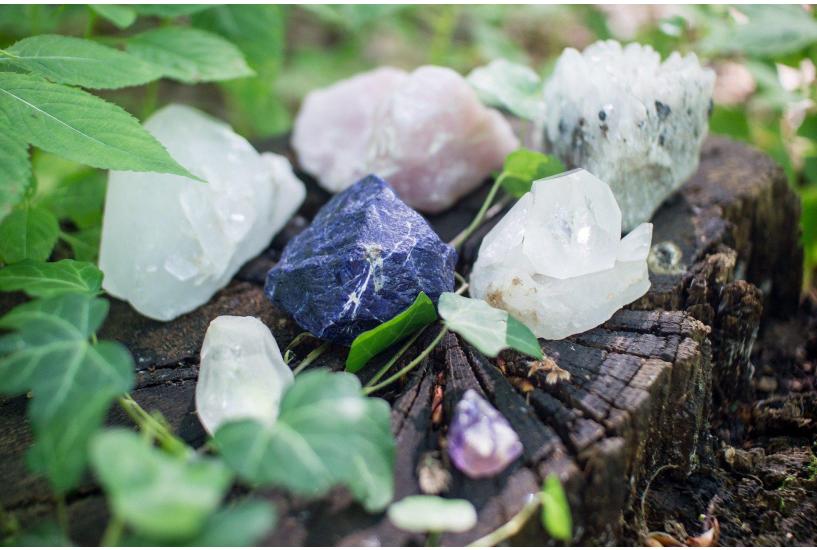When the Right Stone is Wrong: Three Tips for Selecting Crystals
by Nicholas Pearson, author of Crystal Basics and many other books
As crystals continue to rise in popularity, access to them increases, too. These days you can find crystals in mainstream bookstores and gift shops, and gemstones have worked their way into designer fashions and home decor. While this phenomenon comes with innumerable blessings for crystal-lovers, it has also created several roadblocks for effective crystal healing practice. My experience in metaphysical bookstores and occult shops has shown that many newcomers and crystal veterans alike get stuck when choosing crystals for specific needs or goals in their lives.
Because it is so easy to flip through a dictionary of crystal properties or search for their meanings online, many people will pick a few stones that seem to match the description of their situation and hope for the best. I’ve met countless people over the years who try this approach with limited success; some stones work for certain circumstances, but others do not. What results is a lot of discouragement and confusion. Here are three challenges—and three solutions—to selecting the right stones.
The first hurdle that many people face when choosing crystals is an overabundance of oversimplified crystal explanations. This results in a reductive and prescriptive approach to selecting stones: use x crystal for y problem. You might find a list of five or ten or even twenty stones for better sleep, so you buy several of them and tuck them under your pillow only to experience no relief. After another week of sleepless nights you probably start to doubt the efficacy of crystals altogether.
The solution to this lies in asking why. Why am I not sleeping? Or why do I think my throat chakra is blocked? Most prescriptive approaches to crystal healing are effect-centered; in other words they are primarily focused on the what of crystal healing. The problem with this mindset is that we aren’t looking at how we got to where we are or what the mechanism is behind the effects of crystals. Since we all have different experiences and different baggage, we can expect different results from the same stone. The same mechanism (the why) applied to different circumstances can give different results (the what). It’s easy to solve this problem by looking at the cause of your present scenario. Back to the example of sleeplessness, if you start to ask yourself what is keeping you awake at night you can pinpoint the right stone for the job. Is it bodily discomfort or an overactive mind? Asking why helps you look more deeply into the right stone for the job.
Looking at the why behind what crystals do goes hand-in-hand with this, too. If we reduce a crystal’s properties to a few short words and make a beautiful infographic or meme, we’ve probably not told the whole story. We have to think critically about what crystals do and why they display particular effects or qualities. For example, have you ever wondered why citrine is considered a stone of abundance? It isn’t exactly a magnet for wealth, power, or success—at least not outright. The mechanism behind its effects is tied to the action of letting go. Citrine helps you release the things that no longer serve, and it unwinds the tension that holds old patterns in place. By strengthening your ability to let go citrine opens the door for something new to come your way. This gemstone simultaneously empowers you to act with confidence, since you are unburdened by your past. It helps you fulfil your highest potential by releasing the things that prevent you from achieving it. Thus, citrine is not just a stone for money—it promotes success in all areas of life.
As you look deeper into the cause behind particular effects you’ll learn how to find the right stone for the task at hand. One way to look deeper is to start looking at the common threads between the formation process, mineral composition, and crystal system for the stones you work with. These three factors point to the principles that drive the effects of crystal healing.
The second challenge to selecting the right stone is likely to be a divisive topic: relying on color. I’m sure most readers have seen the beautiful, rainbow-colored diagrams of the chakra system at least once, and it would be safe to bet that the majority of us have learned to associate crystals and gemstones with the seven energy centers based on their color. Working with crystals in this way can produce viable results, but I find that a lot of people end up disheartened with their crystal work when they rely on color alone.
To start, the color associations we use today are not exactly ancient. The pattern of following the rainbow spectrum only dates to 1977, while chakra teachings from earlier Western and Eastern sources often use multiple colors to represent any given energy center—and sources often disagree about which ones! The color model works, but we have to remember that it is only a model, and not absolute truth. Your throat chakra is no more blue than it is any other color; the chakras themselves don’t express themselves as light visible to the naked eye. They exist on the spiritual planes that directly impact our material well-being, but they aren’t defined by or limited to the colors we use since they exist beyond the spectrum of the visible and known world.
Let’s take a look at an example of how this model may—or may not—work. If you feel you need help communicating you’d be tempted to choose blue stones to open or activate the throat chakra in some way. Perhaps you pick lapis lazuli, hemimorphite, and blue lace agate--each one a beautiful shade of blue. However, relying on color takes us to the same place as the first challenge outlined above; it makes crystal healing too prescriptive and it ignores the cause behind the effects. Lapis lazuli’s primary effect is to harmonize and unify the heart and mind, removing a sense of inner conflict to grant self-mastery. Naturally, this can lead to much more effective communication, but its action isn’t on the throat chakra directly. Hemimorphite’s zinc content suggests that there is a hidden fire beneath its placid blue hue, and it is a great stone for bringing balance to the sacral chakra by igniting a creative spark. Blue lace agate’s prime directive is to promote resilience and confidence. This gem works to help you examine the beliefs and ideas that have accrued from outside sources, and it empowers you to eject those that don’t support your sense of self-identity. The boost of confidence that blue lace agate offers is more directly correlated with the solar plexus chakra than the throat. Much like lapis lazuli, however, one of the effects of blue lace agate could be improved communication, as it will help you better articulate your own values and ideas with confidence.
So what role does a crystal’s color really play in its effects? It is a surprisingly superficial one. I learned many years ago from one of my teachers that color accounts for about one-fourteenth (or roughly 7%) of a crystal’s energy. I was astonished to learn that at first, but the more I worked with stones the more sense it made to me. Hematite and pyrite are decidedly different colors, but they have a very similar feel thanks to the high iron content in each stone. Conversely, topaz and apatite, two stones that can be the same shade of golden yellow, feel radically different in spite of their shared color. Over time I came to observe that the three primary drivers of crystal energy are its composition, structure, and formation process. Other factors, like its hardness and optical properties, also play an important role in determining what a crystal does.
This doesn’t mean that color is altogether unimportant, though. Color is often a clue to mineral composition. You find lots of blues and greens created by compounds of copper, and many shades of red and brown are created by iron oxides. Color also works wonders because of how we relate to it. The psychological impact of color is well documented. Most people find blue calming and red invigorating, so it stands to reason that stones of those colors will affect us in those ways. However, crystals do so much more than what their colors might indicate. It’s vital that we approach working with crystals from the bigger picture to understand what their effects are and why they work the way they do.
The third, and possibly the most important, obstacle that crystal lovers face when choosing the right stone for the job is the propensity to choose only the stones that feel good. The key word here is only. I think it’s great to pick the stone that feels right in some way. Maybe it’s the weight of the stone in your hand, the way the color attracts the eye, or some inner knowing—you just know it's the right stone. And the stones that we choose this way are usually right for us. Usually.
The problem with choosing stones this way is that we tend to gravitate toward stones that make us feel good. These are absolutely the right stones to bring solace and support when we are depleted, distraught, or otherwise out of sorts. However, the warm-and-fuzzy stones tend to represent energies and lessons that the soul has already mastered in some way. If we seek authentic growth, we don’t achieve it by staying comfortable. Growth is messy, uncomfortable, and often nonlinear. The feel-good stones usually don’t invite the deeper reflection needed to catalyze growth in leaps and bounds. Instead, the real lessons can be facilitated by the crystals that make us uncomfortable in one way or another.
Those stones that make us feel somehow uncomfortable are stirring up the patterns we have long swept under the rug. They reflect our imperfections and shortcomings back to us so we can better identify the course of action needed for healing and hold space for us to sit with the parts of ourselves that may not look at critically and honestly. Rather than avoiding the stones that leave us unsettled, try meditating with one of those stones that seemingly repel you. They may just hold the key to profound healing. Of course it goes without saying that there is an appropriate time and place for working with those gems. It’s probably not a good idea to carry every piece of your most uncomfortable-feeling crystal when you go grocery shopping; instead, dedicate a short meditation to exploring that stone and reach for your feel-good-gems when you are done. Over time, those stones that once felt uncomfortable can become your greatest teachers and allies.
My greatest hope has always been for my work to inspire people to really think about crystals in a new light. If we start by thinking more critically about how and why crystals work—as well as looking for the causes behind the issues we seek to remedy with crystals—then we will expect better results. This means breaking free from the x-crystal-for-y-condition approach and examining what we really seek. In lieu of relying on prescriptive crystal guides and color-chakra correspondences, we can really dig deep to get long-lasting results that support authentic spiritual growth. If you’d like to learn more about choosing the right stones for the right condition, be sure to check out Crystal Basics: The Energetic, Healing & Spiritual Power of 200 Gemstones.
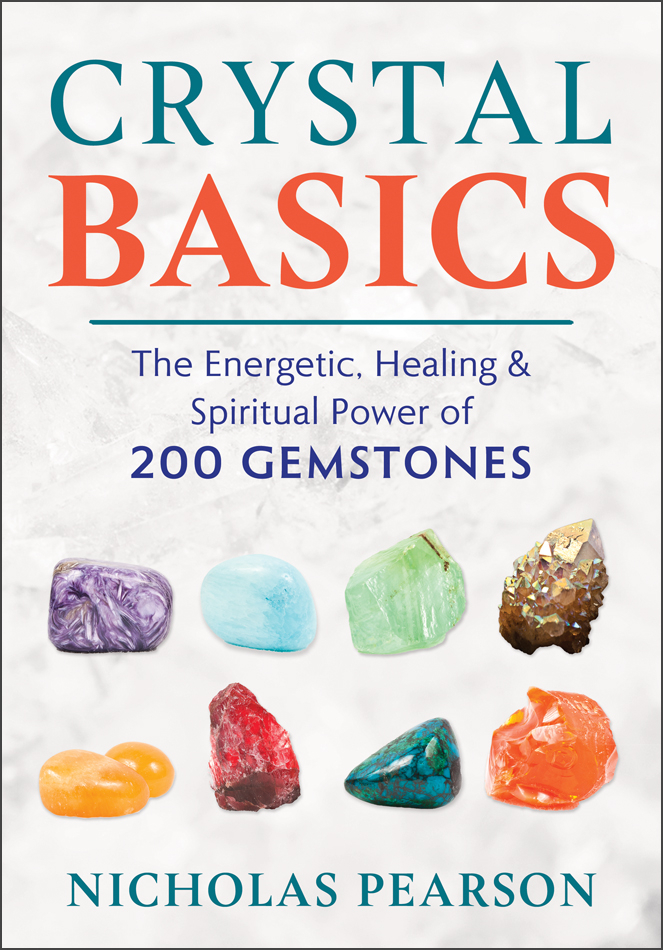 |
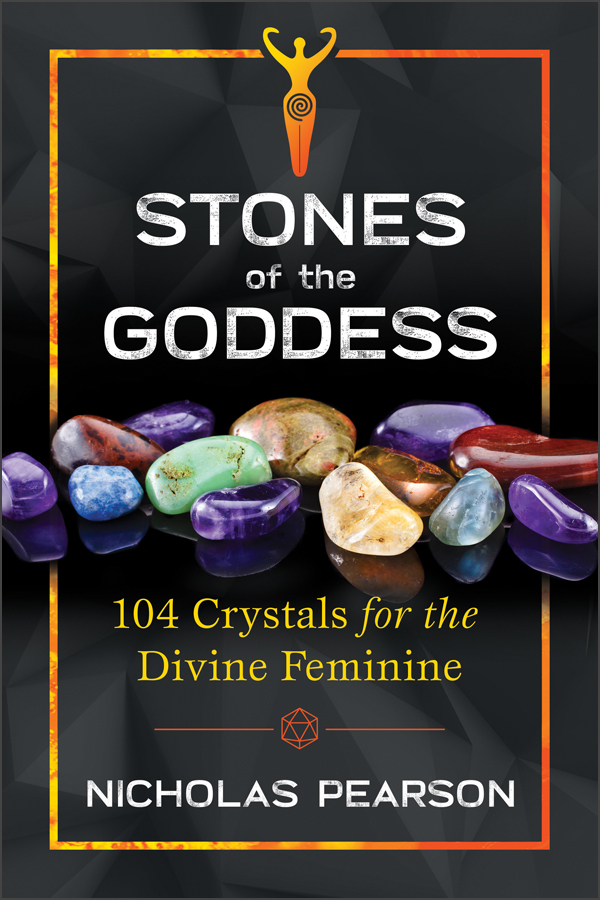 |
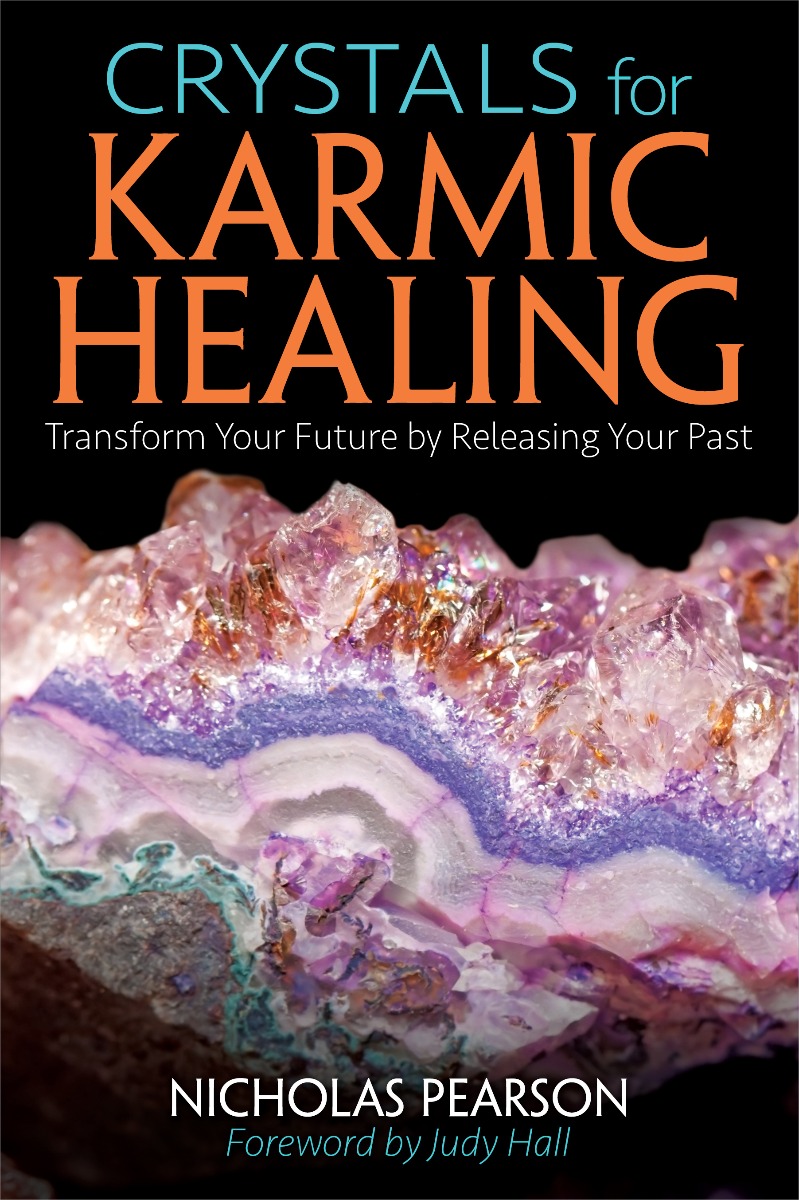 |
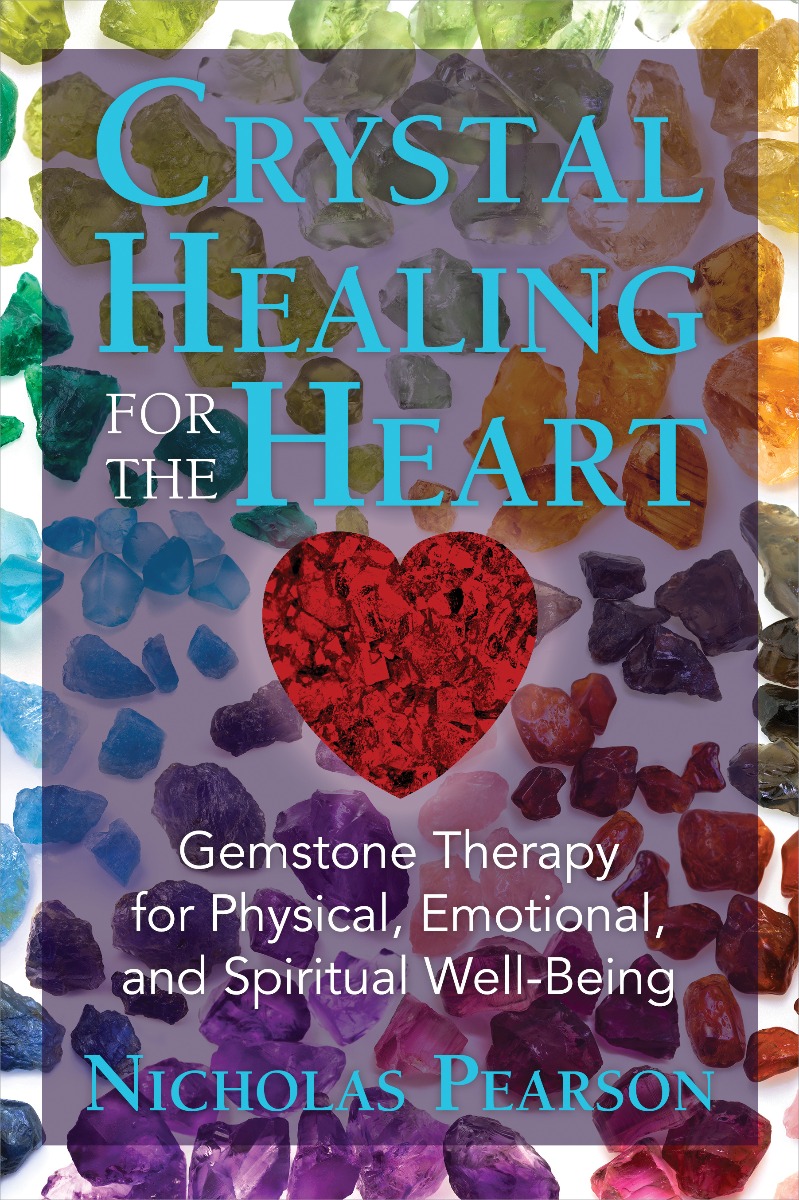 |
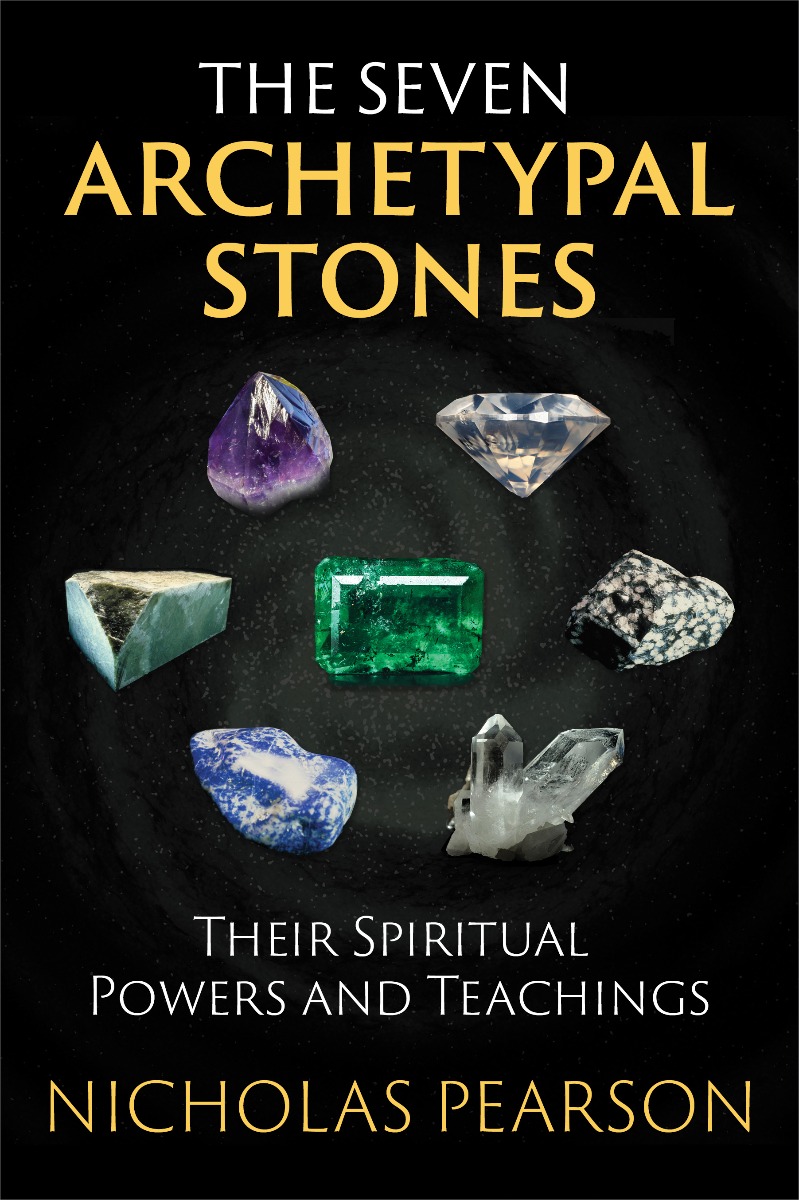 |


